Delaram Sadeghi
Empowering Precision Medicine: AI-Driven Schizophrenia Diagnosis via EEG Signals: A Comprehensive Review from 2002-2023
Sep 14, 2023Abstract:Schizophrenia (SZ) is a prevalent mental disorder characterized by cognitive, emotional, and behavioral changes. Symptoms of SZ include hallucinations, illusions, delusions, lack of motivation, and difficulties in concentration. Diagnosing SZ involves employing various tools, including clinical interviews, physical examinations, psychological evaluations, the Diagnostic and Statistical Manual of Mental Disorders (DSM), and neuroimaging techniques. Electroencephalography (EEG) recording is a significant functional neuroimaging modality that provides valuable insights into brain function during SZ. However, EEG signal analysis poses challenges for neurologists and scientists due to the presence of artifacts, long-term recordings, and the utilization of multiple channels. To address these challenges, researchers have introduced artificial intelligence (AI) techniques, encompassing conventional machine learning (ML) and deep learning (DL) methods, to aid in SZ diagnosis. This study reviews papers focused on SZ diagnosis utilizing EEG signals and AI methods. The introduction section provides a comprehensive explanation of SZ diagnosis methods and intervention techniques. Subsequently, review papers in this field are discussed, followed by an introduction to the AI methods employed for SZ diagnosis and a summary of relevant papers presented in tabular form. Additionally, this study reports on the most significant challenges encountered in SZ diagnosis, as identified through a review of papers in this field. Future directions to overcome these challenges are also addressed. The discussion section examines the specific details of each paper, culminating in the presentation of conclusions and findings.
Automatic Autism Spectrum Disorder Detection Using Artificial Intelligence Methods with MRI Neuroimaging: A Review
Jun 20, 2022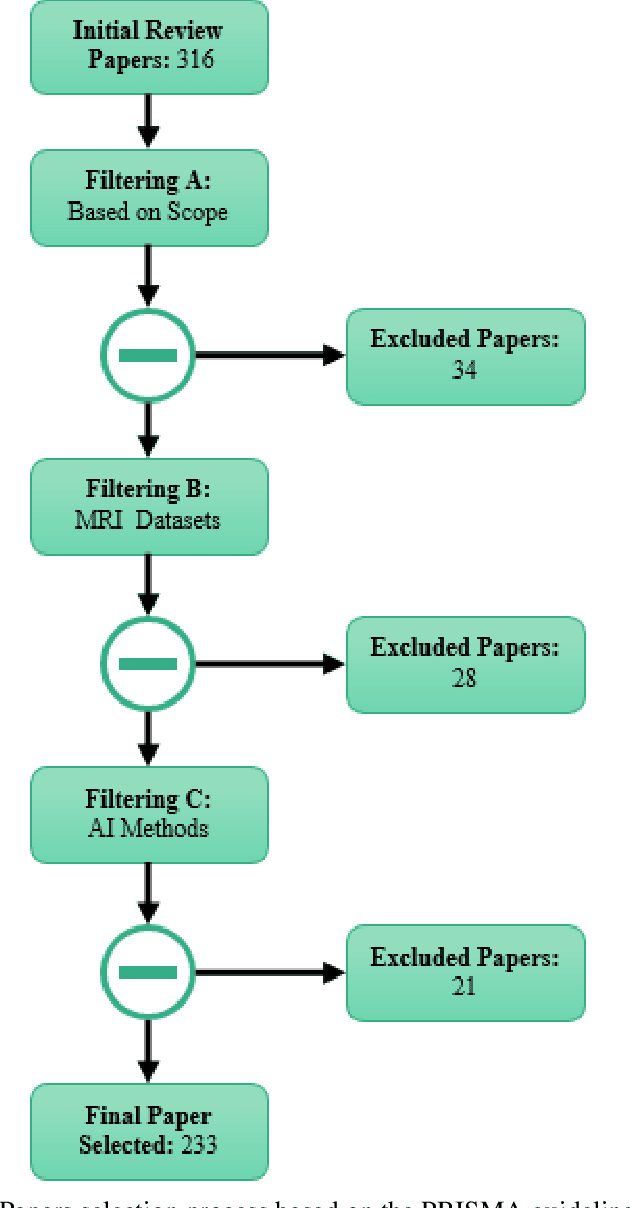

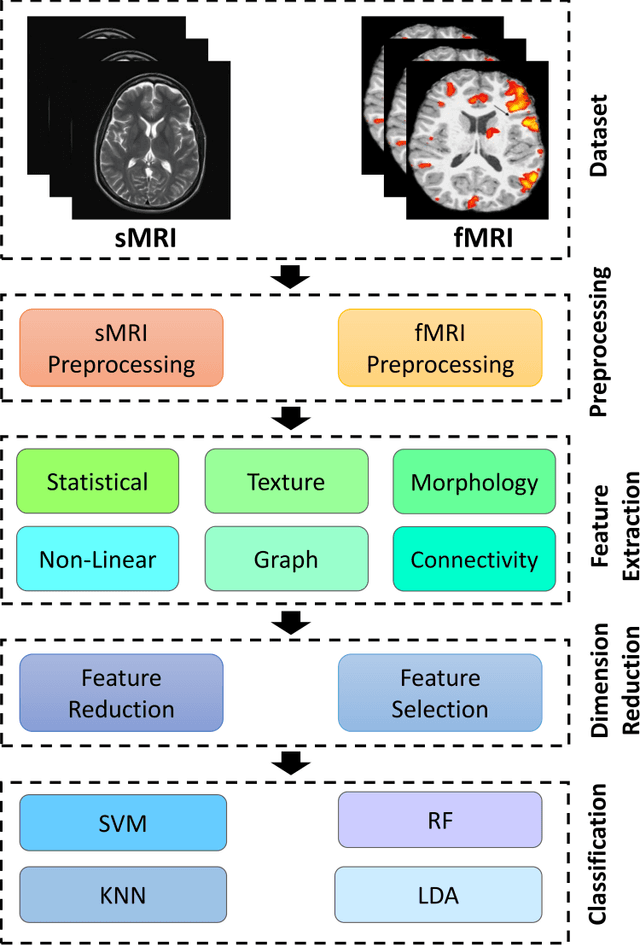
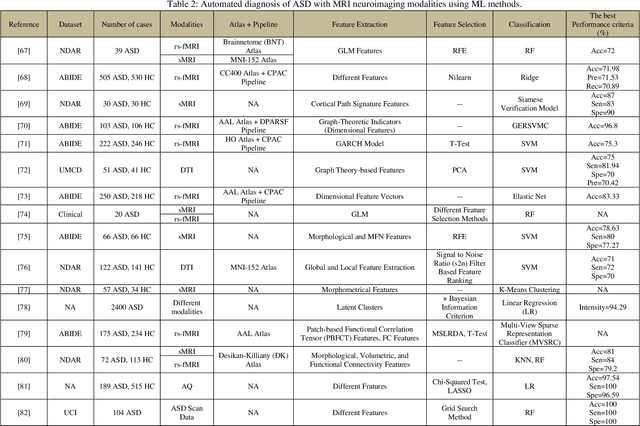
Abstract:Autism spectrum disorder (ASD) is a brain condition characterized by diverse signs and symptoms that appear in early childhood. ASD is also associated with communication deficits and repetitive behavior in affected individuals. Various ASD detection methods have been developed, including neuroimaging modalities and psychological tests. Among these methods, magnetic resonance imaging (MRI) imaging modalities are of paramount importance to physicians. Clinicians rely on MRI modalities to diagnose ASD accurately. The MRI modalities are non-invasive methods that include functional (fMRI) and structural (sMRI) neuroimaging methods. However, the process of diagnosing ASD with fMRI and sMRI for specialists is often laborious and time-consuming; therefore, several computer-aided design systems (CADS) based on artificial intelligence (AI) have been developed to assist the specialist physicians. Conventional machine learning (ML) and deep learning (DL) are the most popular schemes of AI used for diagnosing ASD. This study aims to review the automated detection of ASD using AI. We review several CADS that have been developed using ML techniques for the automated diagnosis of ASD using MRI modalities. There has been very limited work on the use of DL techniques to develop automated diagnostic models for ASD. A summary of the studies developed using DL is provided in the appendix. Then, the challenges encountered during the automated diagnosis of ASD using MRI and AI techniques are described in detail. Additionally, a graphical comparison of studies using ML and DL to diagnose ASD automatically is discussed. We conclude by suggesting future approaches to detecting ASDs using AI techniques and MRI neuroimaging.
Automatic Diagnosis of Schizophrenia using EEG Signals and CNN-LSTM Models
Sep 02, 2021
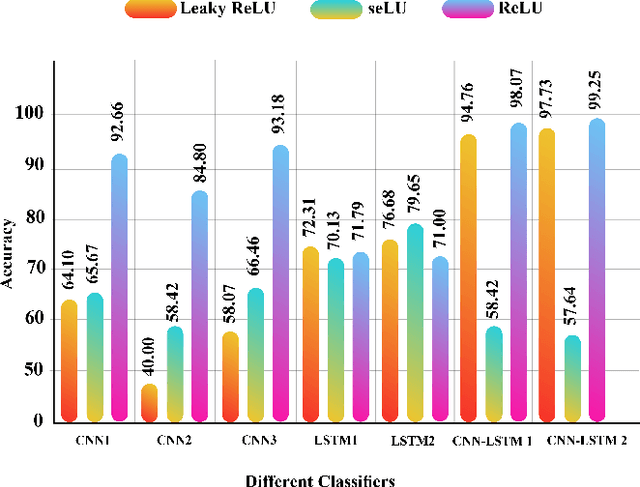
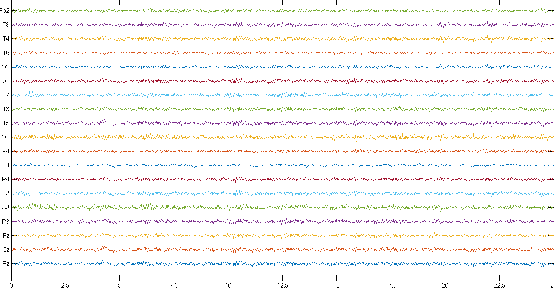
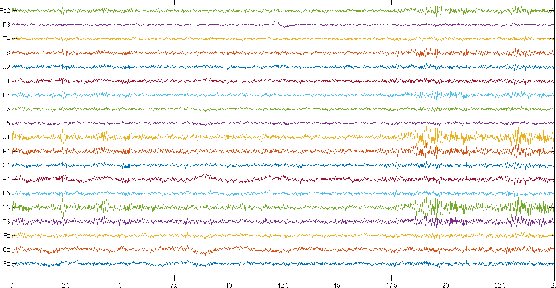
Abstract:Schizophrenia (SZ) is a mental disorder whereby due to the secretion of specific chemicals in the brain, the function of some brain regions is out of balance, leading to the lack of coordination between thoughts, actions, and emotions. This study provides various intelligent Deep Learning (DL)-based methods for automated SZ diagnosis via EEG signals. The obtained results are compared with those of conventional intelligent methods. In order to implement the proposed methods, the dataset of the Institute of Psychiatry and Neurology in Warsaw, Poland, has been used. First, EEG signals are divided into 25-seconds time frames and then were normalized by z-score or norm L2. In the classification step, two different approaches are considered for SZ diagnosis via EEG signals. In this step, the classification of EEG signals is first carried out by conventional DL methods, e.g., KNN, DT, SVM, Bayes, bagging, RF, and ET. Various proposed DL models, including LSTMs, 1D-CNNs, and 1D-CNN-LSTMs, are used in the following. In this step, the DL models were implemented and compared with different activation functions. Among the proposed DL models, the CNN-LSTM architecture has had the best performance. In this architecture, the ReLU activation function and the z-score and L2 combined normalization are used. The proposed CNN-LSTM model has achieved an accuracy percentage of 99.25\%, better than the results of most former studies in this field. It is worth mentioning that in order to perform all simulations, the k-fold cross-validation method with k=5 has been used.
An Overview on Artificial Intelligence Techniques for Diagnosis of Schizophrenia Based on Magnetic Resonance Imaging Modalities: Methods, Challenges, and Future Works
Feb 24, 2021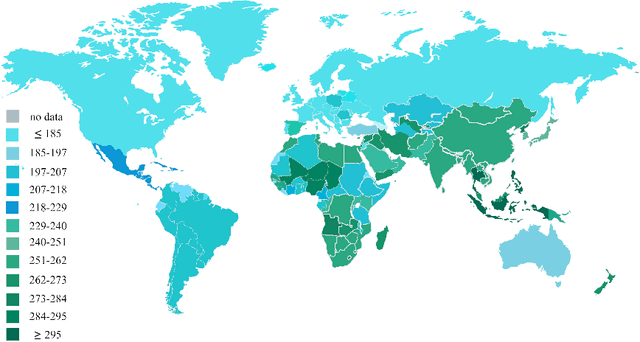
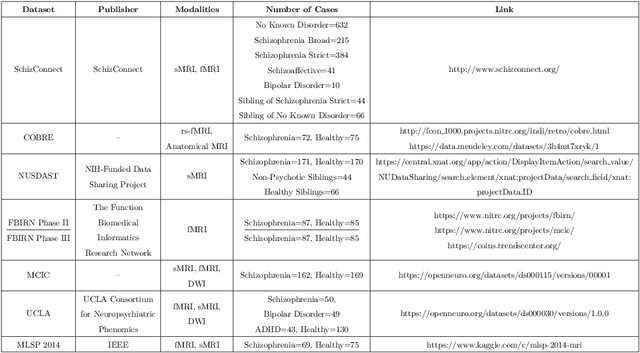
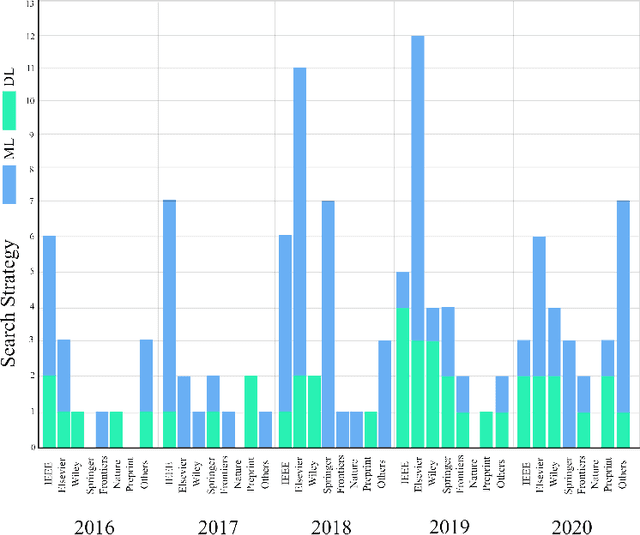
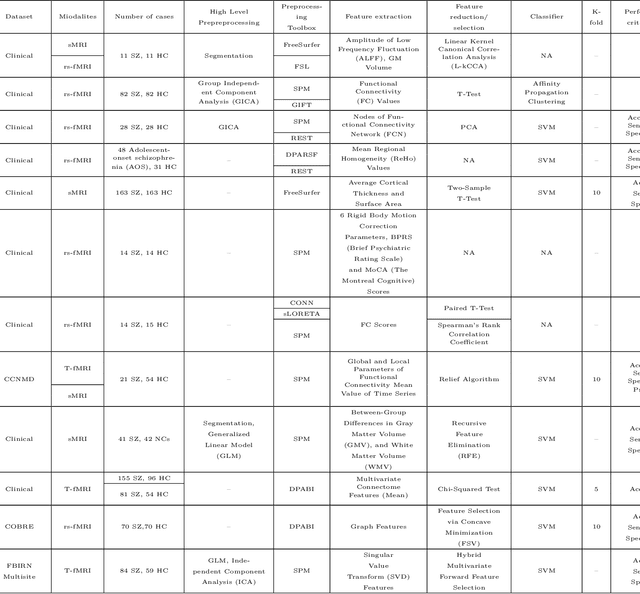
Abstract:Schizophrenia (SZ) is a mental disorder that typically emerges in late adolescence or early adulthood. It reduces the life expectancy of patients by 15 years. Abnormal behavior, perception of emotions, social relationships, and reality perception are among its most significant symptoms. Past studies have revealed the temporal and anterior lobes of hippocampus regions of brain get affected by SZ. Also, increased volume of cerebrospinal fluid (CSF) and decreased volume of white and gray matter can be observed due to this disease. The magnetic resonance imaging (MRI) is the popular neuroimaging technique used to explore structural/functional brain abnormalities in SZ disorder owing to its high spatial resolution. Various artificial intelligence (AI) techniques have been employed with advanced image/signal processing methods to obtain accurate diagnosis of SZ. This paper presents a comprehensive overview of studies conducted on automated diagnosis of SZ using MRI modalities. Main findings, various challenges, and future works in developing the automated SZ detection are described in this paper.
Automated Detection and Forecasting of COVID-19 using Deep Learning Techniques: A Review
Jul 27, 2020



Abstract:Coronavirus, or COVID-19, is a hazardous disease that has endangered the health of many people around the world by directly affecting the lungs. COVID-19 is a medium-sized, coated virus with a single-stranded RNA. This virus has one of the largest RNA genomes and is approximately 120 nm. The X-Ray and computed tomography (CT) imaging modalities are widely used to obtain a fast and accurate medical diagnosis. Identifying COVID-19 from these medical images is extremely challenging as it is time-consuming, demanding, and prone to human errors. Hence, artificial intelligence (AI) methodologies can be used to obtain consistent high performance. Among the AI methodologies, deep learning (DL) networks have gained much popularity compared to traditional machine learning (ML) methods. Unlike ML techniques, all stages of feature extraction, feature selection, and classification are accomplished automatically in DL models. In this paper, a complete survey of studies on the application of DL techniques for COVID-19 diagnostic and automated segmentation of lungs is discussed, concentrating on works that used X-Ray and CT images. Additionally, a review of papers on the forecasting of coronavirus prevalence in different parts of the world with DL techniques is presented. Lastly, the challenges faced in the automated detection of COVID-19 using DL techniques and directions for future research are discussed.
Deep Learning for Neuroimaging-based Diagnosis and Rehabilitation of Autism Spectrum Disorder: A Review
Jul 11, 2020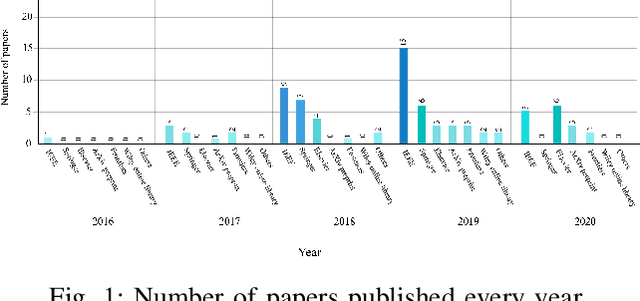
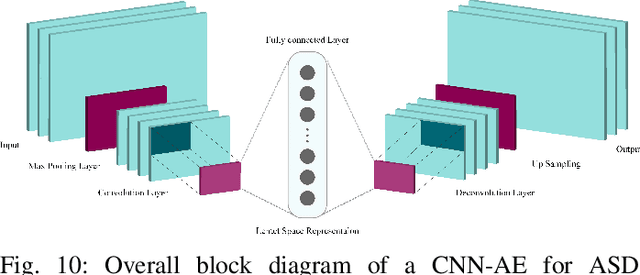


Abstract:Accurate diagnosis of Autism Spectrum Disorder (ASD) is essential for its management and rehabilitation. Neuroimaging techniques that are non-invasive are disease markers and may be leveraged to aid ASD diagnosis. Structural and functional neuroimaging techniques provide physicians substantial information about the structure (anatomy and structural connectivity) and function (activity and functional connectivity) of the brain. Due to the intricate structure and function of the brain, diagnosing ASD with neuroimaging data without exploiting artificial intelligence (AI) techniques is extremely challenging. AI techniques comprise traditional machine learning (ML) approaches and deep learning (DL) techniques. Conventional ML methods employ various feature extraction and classification techniques, but in DL, the process of feature extraction and classification is accomplished intelligently and integrally. In this paper, studies conducted with the aid of DL networks to distinguish ASD were investigated. Rehabilitation tools provided by supporting ASD patients utilizing DL networks were also assessed. Finally, we presented important challenges in this automated detection and rehabilitation of ASD.
 Add to Chrome
Add to Chrome Add to Firefox
Add to Firefox Add to Edge
Add to Edge